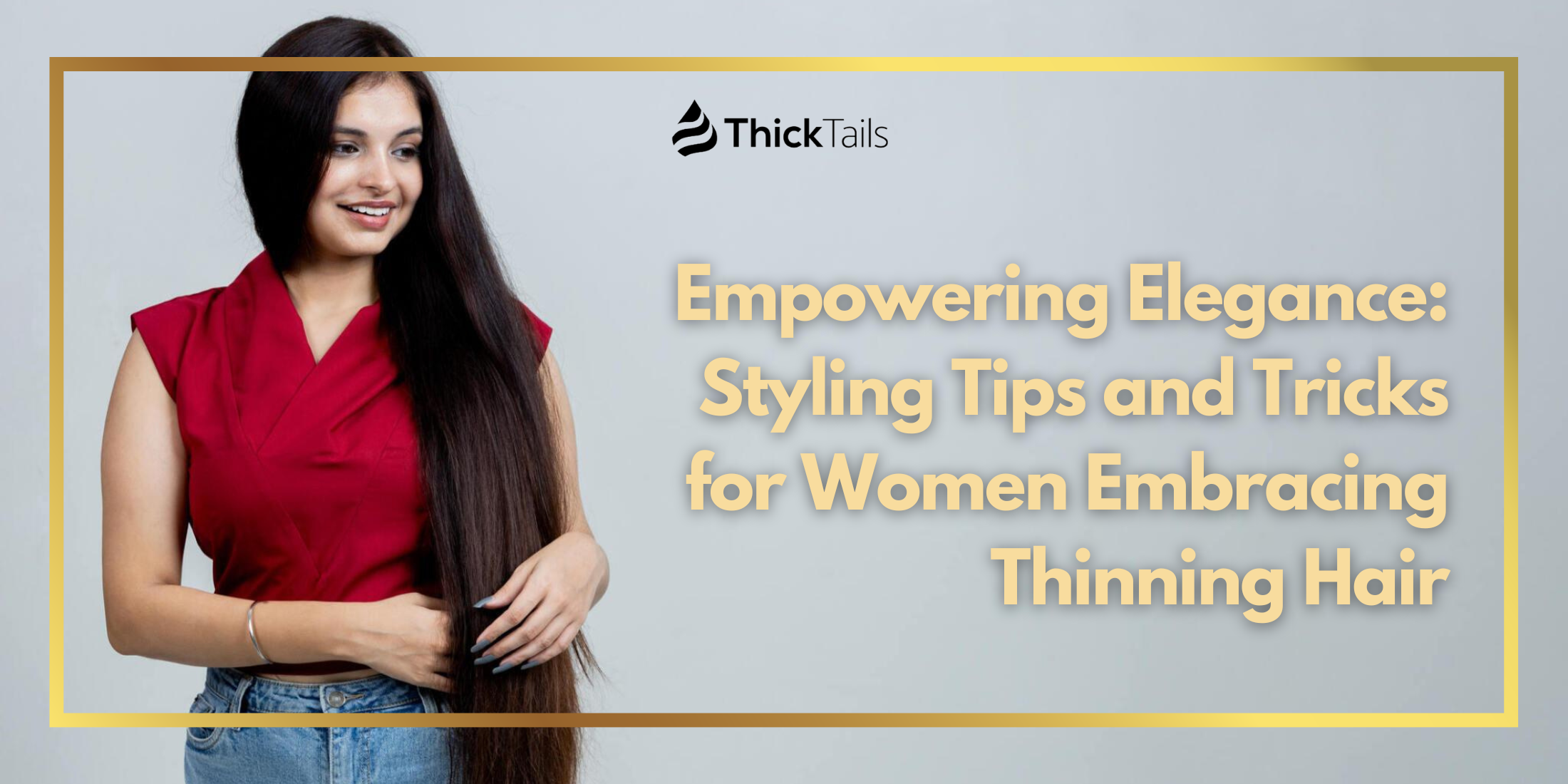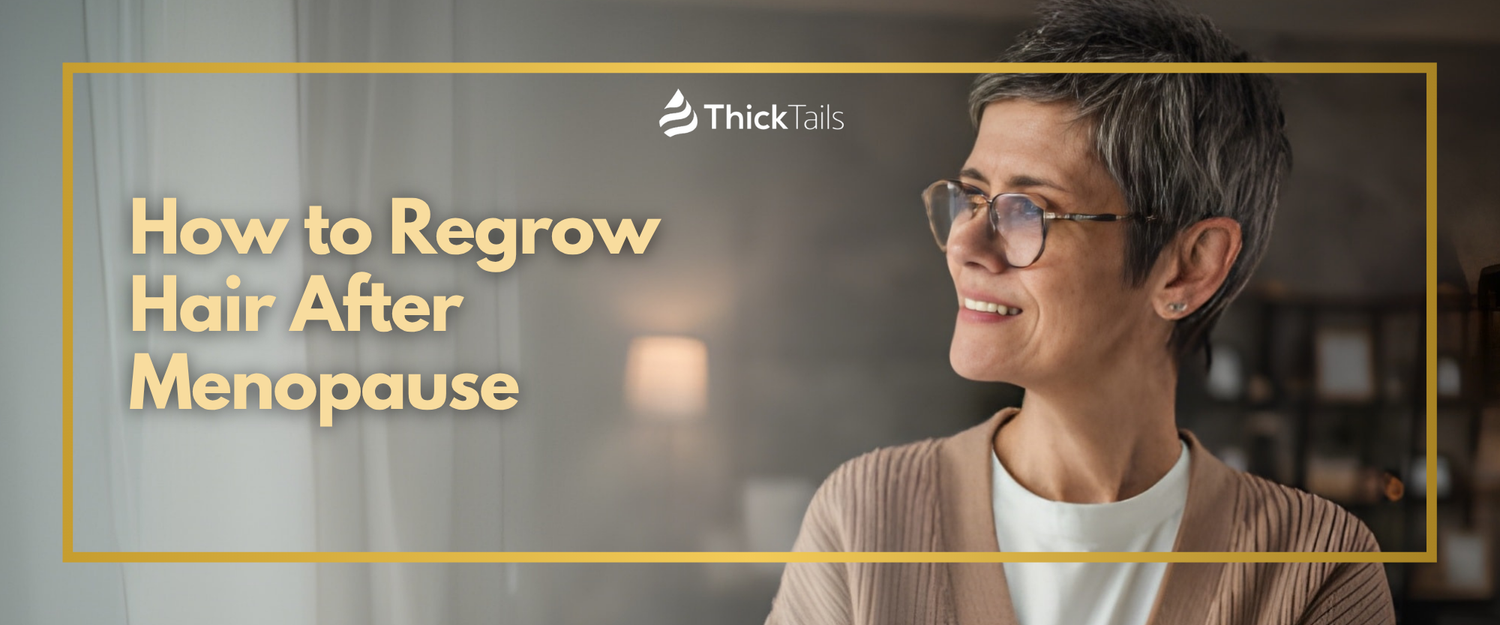As women, our hair is often intertwined with our sense of identity and self-esteem. When thinning hair challenges us, it can be a profound test of our confidence and femininity. But the story doesn't end there. It's a journey marked by creativity, resilience, and an opportunity to embrace a new form of beauty. This comprehensive guide is designed for women facing the nuances of thinning hair — whether it's a side effect of aging, menopause, or postpartum body changes. These pages will give you the tools to style, care for, and, most importantly, celebrate the beauty of your unique hair texture.
Styling Tips for Women with Thinning Hair

When it comes to styling, understanding your hair type is crucial. Women dealing with hair thinning often report feeling that they've lost a significant part of themselves. But with the right tips and tricks, it's possible to accentuate the beauty that remains.
Understanding Different Types of Thinning Hair
Not all thinning hair is the same. Factors such as pattern baldness, hormonal changes, and stress can result in various textures and patterns of thinning. Understanding your specific type can help you target it effectively.
Here are some common types:
- Gradual Thinning All Over: A general reduction in hair density, this kind of thinning is often noticed by a widened part.
- Patchy Hair Loss: Characterized by circular bald patches, it's commonly associated with autoimmune conditions like alopecia areata.
- Receding Hairline or Thinning at the Crown: Often the first noticeable sign of hair loss, this can lead to a more pronounced M-sahped hairline in women.
Knowing which type you're facing can help with targeted styling and product choices.
Choosing the Right Hairstyles to Enhance Volume and Thickness
The right hairstyle can work wonders for creating the look of full-bodied hair. Here are a few styles that can be particularly flattering:
- Layered Cuts: Layers can create the appearance of more volume by adding texture and movement.
- Short and Sassy: Shorter hair is often easier to manage and can have a thicker, fuller look.
- Textured Bobs: A classic bob with textured ends can make hair look thicker and denser.
Tips for Using Hair Accessories to Add Flair and Personality
Accessories aren't just for style; they can serve a practical purpose, too:
- Headbands and Scarves: Not only fashionable but also great for covering up thinning spots and adding a pop of color.
- Clips and Pins: Strategically placing these can add lift to the roots, giving the illusion of thicker hair.
- Hair Extensions: For special events or when you want that extra boost of volume, extensions can be a game-changer.
Tricks for Creating the Illusion of Thicker Hair
Sometimes, faking it until you make it is more than just a saying. With the right products and techniques, you can create the look of luscious, thick locks.
Hair Care and Styling Products to Boost Volume and Texture
Investing in the right products is key to achieving the hair of your dreams. Look for shampoos and conditioners designed to add volume without weighing hair down. Here are some key ingredients to keep an eye out for:
- Hydrolyzed Proteins: These can help build up the strength and integrity of your hair.
- Biotin: Known to promote hair growth and overall hair health.
- Panthenol: A form of Vitamin B5 that can add volume and thickness.
Techniques for Volumizing and Texturizing Thin Hair
Getting the most out of your styling routine can make a significant difference in the perceived thickness of your hair.
Here are some techniques to try:
- Blow Dry Upside Down: This can help lift the roots and create volume.
- Velcro Rollers: Using these can add lift and texture to your strands.
- Teasing: Be gentle with this technique to avoid damage, but a little teasing at the crown can work wonders for volume.
DIY Home Remedies and Treatments for Fuller-Looking Hair
If you prefer natural solutions, there are options to explore:
- Egg Mask: A mixture of eggs and oil can be a nourishing and conditioning treat for your hair, leaving it with a glossy appearance.
- Aloe Vera: Known for its healing properties, aloe vera can also promote hair growth and reduce dandruff.
- Red Onion Juice: Surprisingly, red onion juice has been linked to hair regrowth due to its high sulfur content.
Be sure to patch-test any new ingredient on a small area of skin before applying it to your scalp to avoid adverse reactions.
Building Confidence and Embracing Your Unique Beauty

Ultimately, the goal is to build confidence and feel empowered by your hair, not limited by it.
Embracing Your Natural Hair Texture and Color
Learning to love the hair you have can be a transformational journey. Sometimes, it's as simple as finding the right products that work with your natural texture.
Self-Care Tips for Healthy Hair and Scalp
A healthy scalp is the foundation for healthy hair. Here are some self-care tips to promote optimal hair health:
- Scalp Massages: Stimulating blood flow to the scalp can encourage hair growth.
- Balanced Diet: A diet rich in vitamins, minerals, and proteins can lead to healthier hair.
- Regular Trims: Keeping split ends at bay can make your hair look and feel thicker.
Tips for Styling and Maintaining Your Hair to Feel Confident and Beautiful
Styling is an art, but maintenance is a ritual. Here's how to integrate both into your hair care routine:
- Protective Styling: Limiting heat and chemical damage is crucial. Consider styles like braids and twists that can help protect your hair.
- Quality Over Quantity: Invest in good styling tools and products. Sometimes, a little bit of a high-quality product can go a long way.
- Invest in Good Brushes and Combs: The right tools can make all the difference in your daily styling routine.
Remember, your beauty is not defined by the volume of your hair, but by the grace with which you carry yourself. Embrace these tips to empower your elegance and create the look you love. Whether you choose to enhance the volume with products and tools or relish in the beauty of your natural texture, the most important thing is to feel good and confident in your own skin — or strands, as it were.












